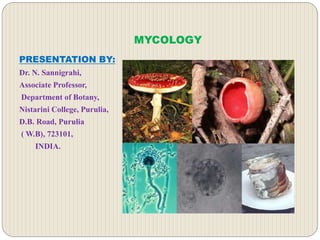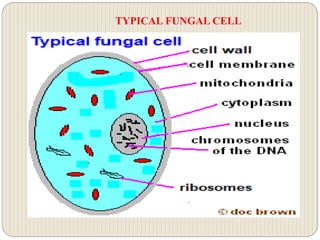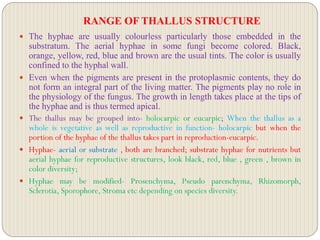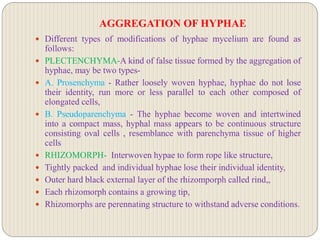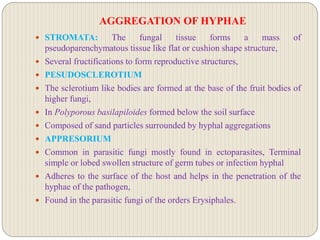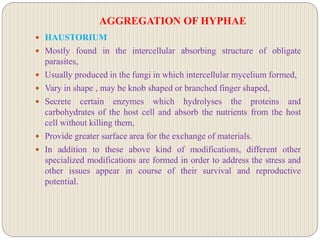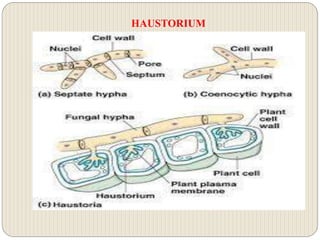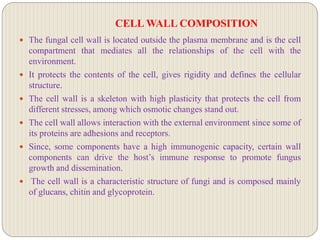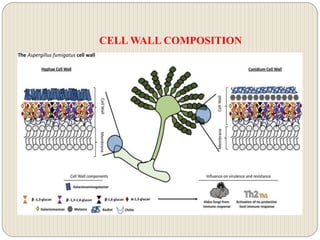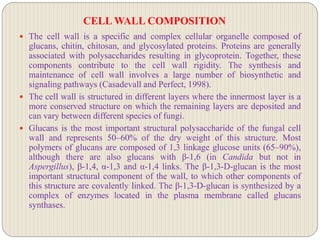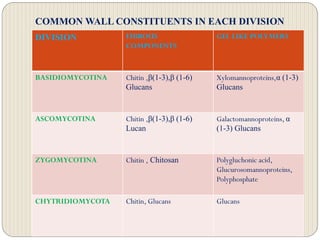The presentation by Dr. N. Sannigrahi provides an overview of mycology, focusing on the structure and organization of fungal cells, including their unique thallus forms and various types of hyphae. It discusses the composition and functions of the fungal cell wall, highlighting its significance in interaction with the environment and its diversity among different fungal groups. The presentation emphasizes the ecological roles of fungi as heterotrophs, their reproductive strategies, and their importance in agriculture and industrial applications.
